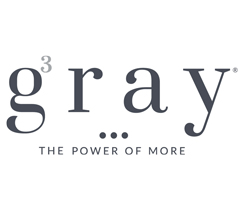Takeaways from PERC’s golf demo program

PERC’s golf demo program tested propane maintenance equipment at eight golf courses from 2015 to 2016. Photo courtesy of PERC.
Final survey data from a Propane Education & Research Council (PERC) equipment demonstration program shows that propane-powered golf maintenance equipment can dramatically reduce emissions and save superintendents money, the organization says.
Savings can be achieved through lower fuel and maintenance costs compared to similar equipment powered by traditional fuels, PERC adds.
“Propane scored really well with the superintendents and, possibly just as important, with their operators and service technicians,” says Jeremy Wishart, deputy director of business development at PERC, who also offered some insights on program developments last year in an LP Gas article. “They got to see firsthand that propane has some incredible environmental, financial and operational benefits.”
PERC’s golf demo program tested propane maintenance equipment at eight golf courses for up to a year from 2015 to 2016. In return for the equipment, each course recorded detailed information about each machine operating on propane, which was reported back to PERC.
When asked to measure on a scale from 1 to 5 for a variety of equipment performance outputs, superintendents and their crews gave high marks to operating with propane. Seventy-five percent of superintendents reported an improved perception of propane after the program, and responses averaged a 4 when regarding a superintendent’s willingness to recommend propane-powered equipment to others.
The training of propane refueling received a 4.5 average rating; support from the propane industry received a 4.5 on average; and performance of fuel delivery received a 4.25-average rating.
Also, every piece of propane equipment used on the courses reduced greenhouse gas emissions, according to an emissions analysis Nexight Group conducted comparing the propane demo equipment to similar machines powered by gasoline and diesel engines. Using engine certification data from the U.S. Environmental Protection Agency and the California Air Resources Board, the report compared carbon monoxide, carbon dioxide and nitrogen oxides emissions produced by the different fuels.
Compared to gasoline-powered equipment, the propane units reduced carbon monoxide emissions up to 44 percent and nitrogen oxides emissions up to 27 percent. Compared to diesel equipment, the propane units reduced nitrogen oxides emissions up to 94 percent and carbon dioxide emissions up to 17 percent.
PERC collaborated with Audubon International and R&R Products, a propane-powered turf equipment provider, on the golf demo program. Eight courses participated, including:
- Columbus Municipal Golf Courses, Columbus, Ohio
- Eagles Pride Golf Course, Joint Base Lewis-McChord, Washington
- Fernandina Beach Golf Club, Fernandina Beach, Florida
- George W. Dunne National, Oak Forest, Illinois
- Reston National Golf Course, Reston, Virginia
- Stone Mountain Golf Club, Stone Mountain, Georgia
- Marriott Desert Springs Golf Club, Palm Desert, California
- The Vinoy Renaissance St. Petersburg Resort & Golf Club, St. Petersburg, Florida
Each course was leased four pieces of propane-powered equipment from R&R Products, including a Reel Max 331LP finish-cut reel mower, a Reel Max 744LP4 gang fairway mower, a Reel Max 544 LP4 five-gang fairway mower, a Greens Max 2200LP riding greens mower and a Sand Max 521LP utility vehicle.
















